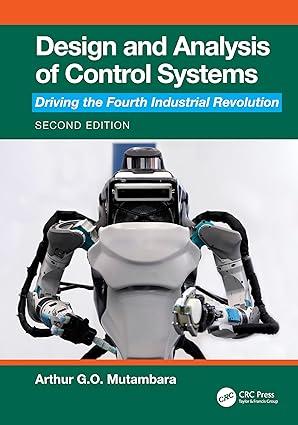(a) Compare and contrast the Matched Pole Zero (MPZ) and the Modified Matched Pole Zero (MMPZ) methods....
Question:
(a) Compare and contrast the Matched Pole Zero (MPZ) and the Modified Matched Pole Zero (MMPZ) methods. Explain the advantages and drawbacks involved.
(b) A compensator for an electrical power control system is given by
\[D(s)=\frac{10 s+30}{0.1 s+0.4}\]
Use the Matched Pole Zero (MPZ) method to design an equivalent digital compensator D(z). Use a sampling time of 1 second.
(c) For the same continuous-time compensator \(D(s)\) in (b), use the Tustin approximation method to design a digital compensator \(D(z)\). Use a sampling time of 1 second.
(d) Compare the DC gains of the two compensators obtained in
(b) and (c), and explain the significance of your answer.
(e) If we use a much high sampling rate, say \(100 \mathrm{~Hz}\), what will happen to the structure and performance of the two compensators? Give reasons for these outcomes.
(f) Why do we use the direct discrete design of digital systems? Outline the processes involved in carrying out such a design.
Step by Step Answer:

Design And Analysis Of Control Systems Driving The Fourth Industrial Revolution
ISBN: 9781032718804
2nd Edition
Authors: Arthur G O Mutambara





